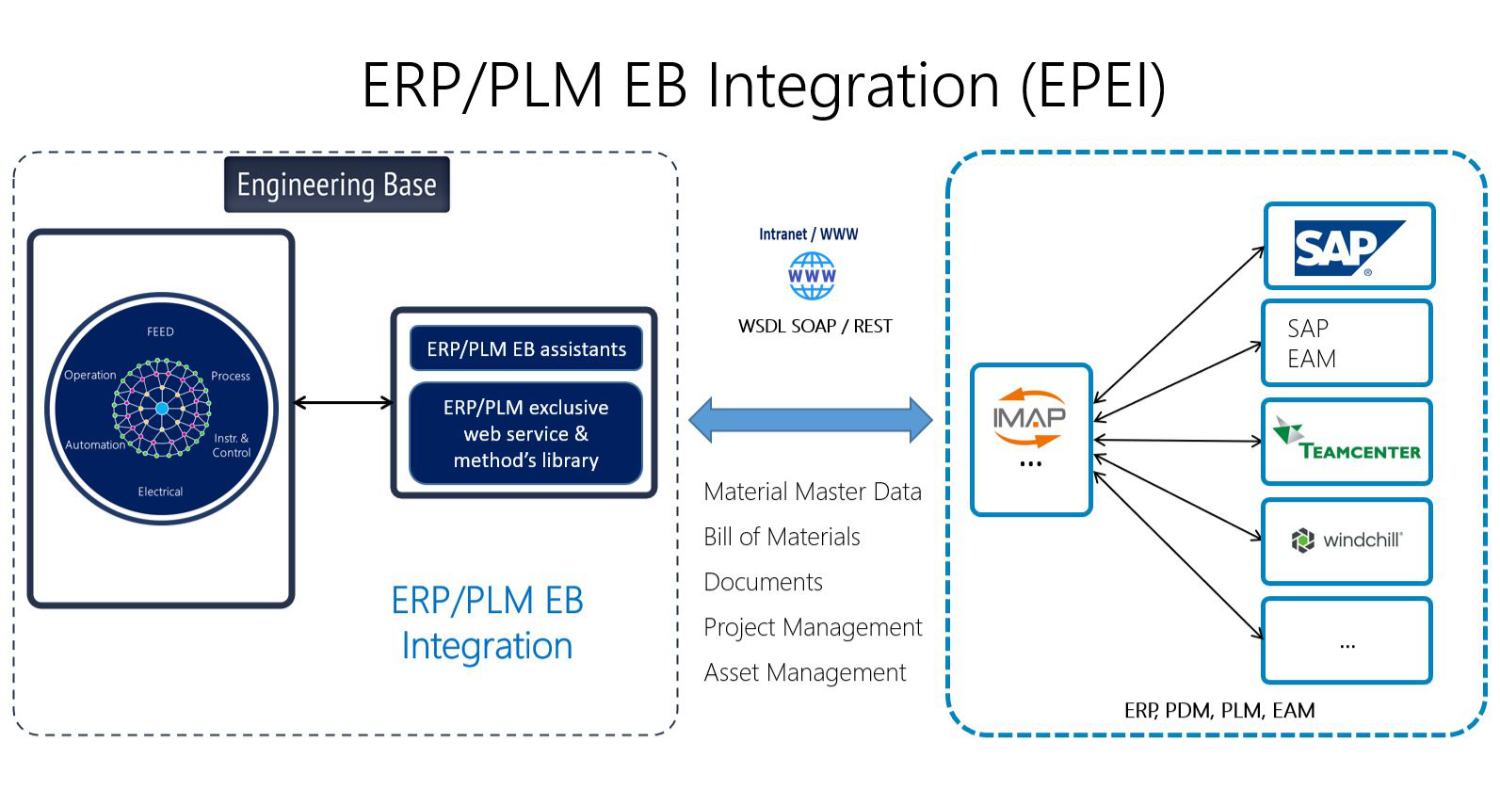While engineers elsewhere still have to check Excel tables row by row for errors, lay graphics from different tools next to each other or transfer the umpteenth simulation manually, EB users are well ahead of them.
The data consolidation with supplementary systems takes place with EB via standardized interfaces – we call them EB portals. They open up new possibilities for cooperation in the planning, construction and operation of plants and create a previously unknown level of consistency, especially for EPC contractors - with almost no effort. This is how consolidation works today!
Process scenario management at its best
 AUCOTEC AG
AUCOTEC AG The initial phase of plant development (FEED) occupies a special position in terms of possible efficiency gains. This is because the simulation work increases with the number of conceivable system scenarios. Thanks to EB's interfaces to Aspen, Pro II, XLS and similar tools, many scenarios can be documented and automatically compared in a very short time; the time-consuming and error-prone manual transfer of simulation data to the engineering tool is no longer necessary. In addition, the tender for the selected scenario can be prepared in no time at all, and the engineering department already has all the necessary basic data for the next planning stage. In addition to the certainty of building the ideal plant at the right price, the focus is on the enormous time saving in the FEED phase.
Integration of ERP and PLM data

From product to process innovation via the control of company resources, solutions for Enterprise Resource Planning (ERP) and Product Lifecycle Management (PLM) are now important efficiency levers in contemporary digitalized companies. AUCOTEC's platform for the integration of both system types connects the engineering experts with these central data pots of a company – with perfect data consistency in real time without any user interaction. In practice, the bidirectional connection to EB benefits the management of material master data as well as BOMs and document management or project organization.
DCS - controlled programming
 AUCOTEC AG
AUCOTEC AGThe programming of control systems of complex industrial plants also benefits from consistent plant models. The control logics are usually created at the end of the engineering process under high time pressure – which is exacerbated when recurring manual cross-checks and data transfers have to compensate for the lack of a common data source. Via EB's DCS portal, the programming of the most diverse automation systems such as PCS 7 or 800xA receives all design changes live, automatically, error-free and chronologically traceable.
3D - a picture of a data model
 © AUCOTEC AG
© AUCOTEC AGMechanics, layout, piping, civil engineering – 3D plant designers use a variety of discipline and trade-specific tools. They also take into account information from two-dimensional planning – just as 2D planners rely on details from the 3D design. Here EB's XML-based 3D portal creates a bidirectional bridge to all common 3D tools. The XML structure always remains the same – and all information merges in EB's central data model. An important plus: this can be done completely automatically 24/7 via web service (DaaS), without the intervention of a client. It's as easy as that only with EB!


